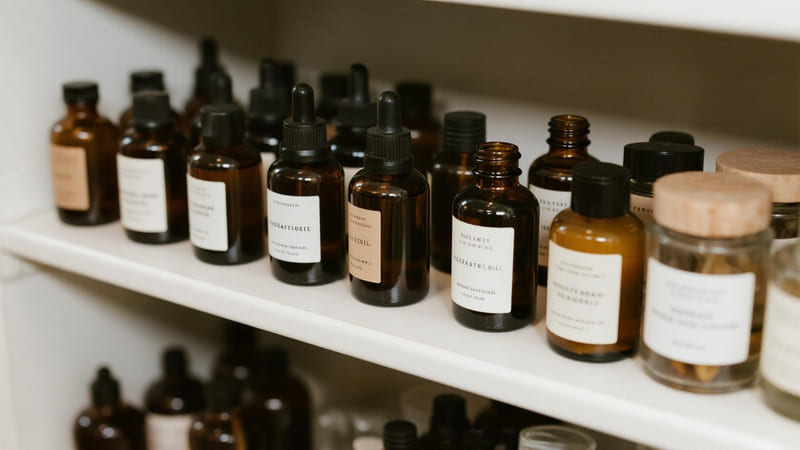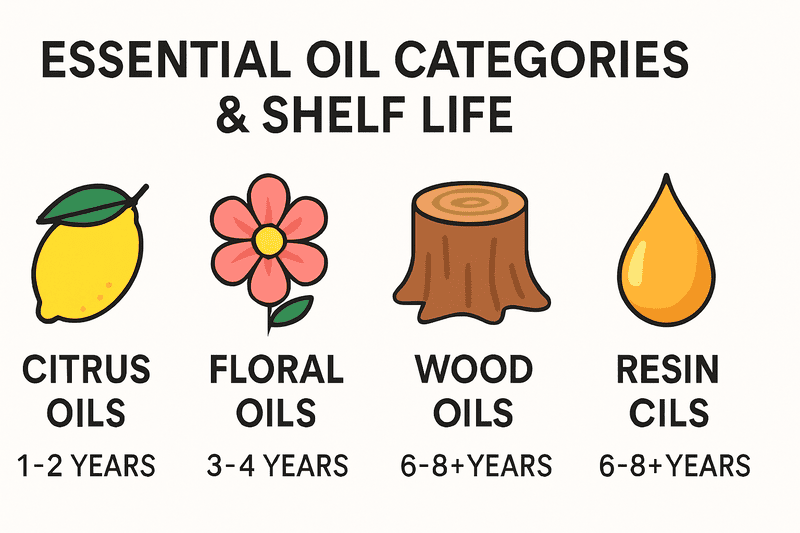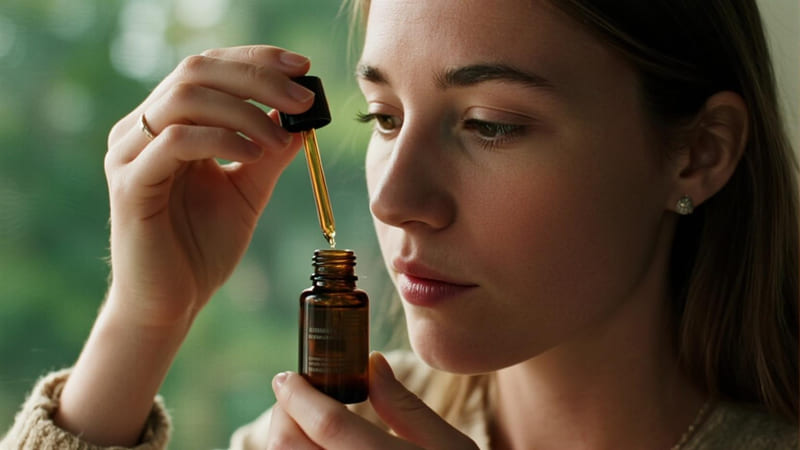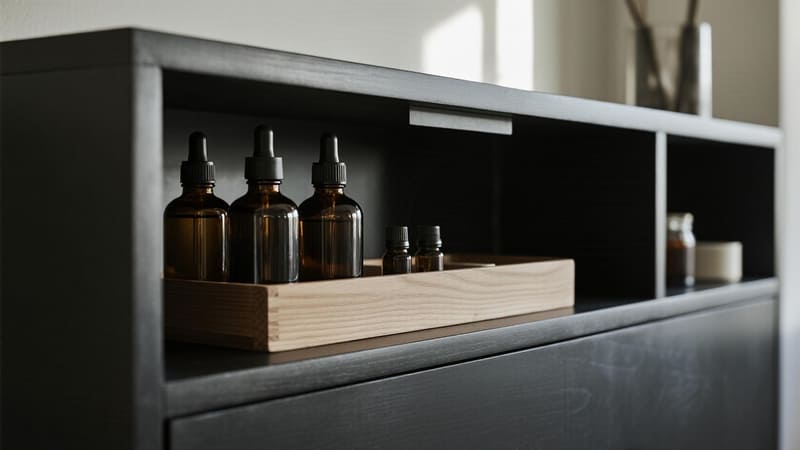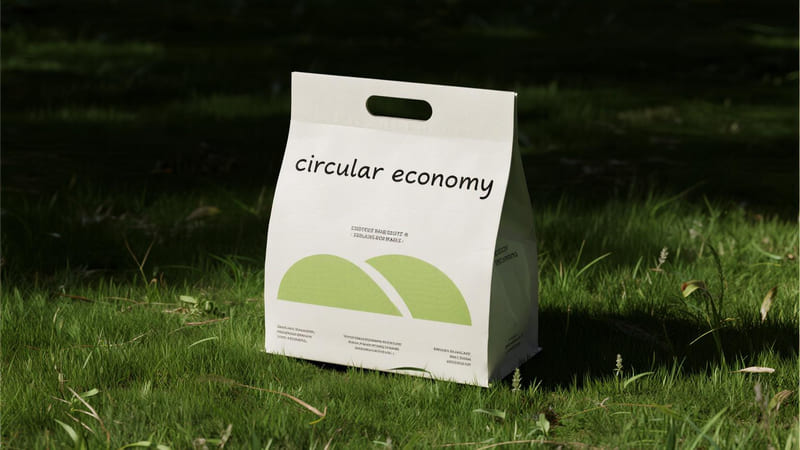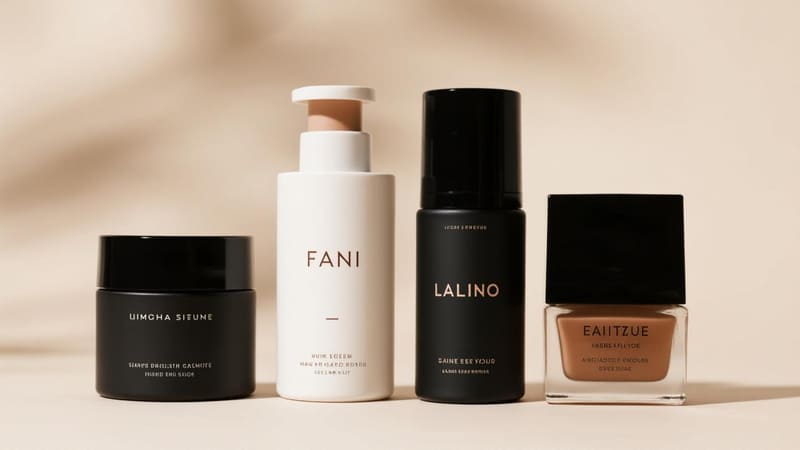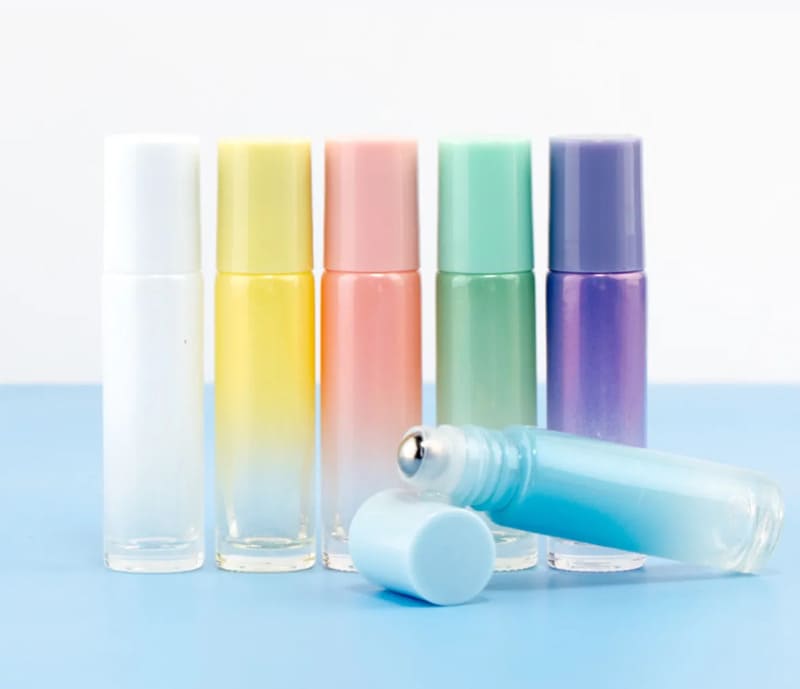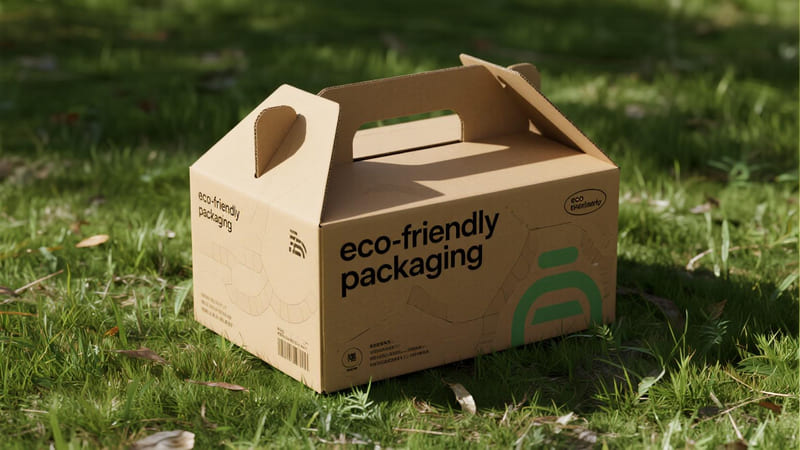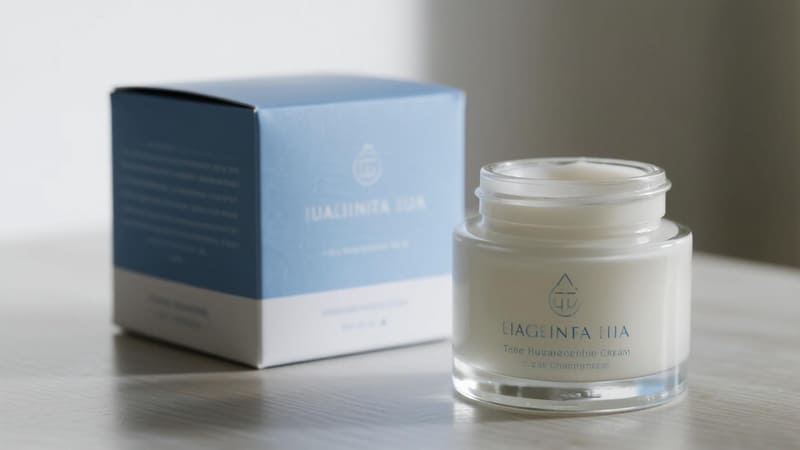Essential oils, cherished for their aromatic and therapeutic properties, are natural products that can degrade over time. Storing them in a dark bottle is the single most important step to preserving their quality, but how long can you actually expect them to last?
When stored properly in a dark glass bottle in a cool, stable environment, most essential oils will stay good for approximately 2-5 years. However, the shelf life varies significantly depending on the oil’s chemical family, with citrus top notes being the most fragile (1-2 years) and heavy base notes like patchouli and sandalwood lasting much longer, even improving with age (5-10+ years).
The dark bottle is a crucial guardian against light degradation, but it’s just one part of the preservation puzzle. The oil’s inherent chemistry, along with other storage factors, plays a huge role in its longevity. As a packaging expert with ShineTop, I know that the right container is key, but understanding the product inside is just as important.
What is the Average Shelf Life of Essential Oils?
While there’s a wide range, we can group essential oils into general categories to get a good idea of their expected shelf life when stored correctly.
The average shelf life of essential oils varies by chemical family. Citrus oils (top notes) typically last 1-2 years. Floral, herbal, and spicy oils (middle notes) often last 2-5 years. Woody, earthy, and resinous oils (base notes) are the most stable, lasting 5-10 years or even longer, with some, like patchouli and sandalwood, improving with age.
Here is a more detailed breakdown:
Shelf Life by Essential Oil Family (in a dark bottle, stored properly):
-
1-2 Years (Most Fragile – Top Notes):
- Citrus Oils (Expressed): Lemon, Lime, Grapefruit, Bergamot, Sweet Orange. These are high in monoterpenes (like limonene), which oxidize very quickly.
- Some Coniferous Oils: Pine, Fir, Spruce. Also high in monoterpenes.
- Frankincense & Lemongrass: Despite being a resin and a grass, these are also known to have a shorter shelf life due to their specific chemistry.
-
2-5 Years (Moderately Stable – Middle Notes):
- Herbal Oils: Lavender, Peppermint, Spearmint, Rosemary, Tea Tree, Basil, Marjoram.
- Floral Oils: Geranium, Roman Chamomile, Ylang Ylang, Neroli. (Note: Precious absolutes like Rose and Jasmine can last longer).
- Spice Oils: Clove, Cinnamon, Cardamom, Ginger.
- Most other oils fall into this general category.
-
5-10+ Years (Most Stable – Base Notes):
- Woody Oils: Sandalwood, Cedarwood. These oils are rich in sesquiterpenes and sesquiterpenols, which are very stable molecules.
- Earthy/Resinous Oils: Patchouli, Vetiver, Myrrh, Spikenard.
- Like a Fine Wine: Many of these oils, particularly Patchouli, Sandalwood, and Vetiver, are known to improve with age. Their aroma becomes deeper, richer, and more complex over time.
What about Carrier Oils?
- Carrier oils (like Jojoba, Almond, Coconut) also have a shelf life, typically 1-2 years. If you make a blend, the shelf life of the blend is determined by the ingredient with the shortest shelf life.
What Factors Cause Essential Oils to Go Bad?
"Going bad" for an essential oil means it has oxidized. This chemical change alters its aroma, reduces its therapeutic benefits, and, most importantly, can make it more likely to cause skin irritation or sensitization.
The primary factors that cause essential oils to go bad are exposure to oxygen, light (especially UV), and heat. These three elements accelerate the process of oxidation, which chemically alters the oil’s delicate compounds, leading to degradation and spoilage.
Storing your oils in a dark bottle is a great start because it combats light, but you must also manage the other factors.
-
Oxygen (Oxidation):
- This is the main culprit. When the volatile molecules in essential oils are exposed to oxygen, they undergo chemical reactions.
- How it Happens: Every time you open the bottle, you introduce fresh oxygen. The more empty space ("headspace") in the bottle, the more oxygen is available to interact with the oil.
- Solution: Keep caps tightly sealed. For precious oils that you use slowly, consider decanting them into smaller bottles as you use them up to reduce the headspace.
-
Light (Photodegradation):
- UV light from the sun is a powerful catalyst that provides the energy for oxidative reactions to happen much faster.
- How it Happens: Storing bottles on a sunny windowsill or in direct light.
- Solution: Store oils in dark-colored glass bottles (amber, cobalt blue). This is why the bottle material is so critical. Even with a dark bottle, it’s best to store them in a dark place like a cupboard or a wooden box.
-
Heat:
- Heat also provides energy that speeds up the rate of chemical reactions, including oxidation.
- How it Happens: Storing oils near a stove, radiator, in a hot car, or in a bathroom where temperatures fluctuate with hot showers.
- Solution: Store oils in a cool, stable temperature environment. A cool, dark closet or a dedicated storage box is ideal. Refrigeration can extend the life of fragile citrus oils, but they may become cloudy (this resolves at room temperature).
How Can You Tell if an Essential Oil Has Gone Bad?
Detecting a spoiled essential oil is usually done through your sense of smell, but there are other visual cues as well.
You can tell if an essential oil has gone bad primarily by a change in its aroma; it may smell flat, harsh, sour, or simply "off" compared to how it smelled when new. Other signs include a change in color (often darkening), a change in consistency (thickening or becoming cloudy), or if it causes unexpected skin irritation.
Trust your senses. If an oil doesn’t seem right, it’s better to be safe.
Signs of a Spoiled (Oxidized) Oil:
- Change in Smell (Most Obvious Sign):
- The aroma will be the first thing to change. It might lose its bright, fresh notes and take on a dull, flat, or even turpentine-like smell.
- It’s helpful to be familiar with what a fresh oil smells like. When you get a new bottle, take a moment to register its fresh aroma as a baseline.
- Change in Consistency:
- The oil may become thicker and more viscous over time.
- It might appear cloudy or hazy. (Note: Some oils can become cloudy when cold; this is normal and should clear up at room temperature. Cloudiness at room temp can be a sign of spoilage).
- Change in Color:
- While some oils naturally darken with age (like Patchouli), a significant or unexpected change in color can be a sign of oxidation.
- Skin Irritation:
- This is a critical safety issue. Oxidized essential oils have a higher risk of causing skin sensitization, irritation, or allergic reactions. If an oil that you previously used without issue suddenly causes redness or itching, it has likely gone bad.
What to do with a spoiled oil?
- DO NOT apply it to your skin.
- You can still use some less-than-fresh oils for cleaning purposes (e.g., adding a few drops to a cleaning solution for scent), but if the smell is unpleasant, it’s best to dispose of it. To dispose, you can add it to absorbent material like cat litter or sawdust, seal it in a bag, and place it in the trash.
How to Maximize the Shelf Life of Your Essential Oils?
By taking a few simple, proactive steps, you can ensure your essential oils stay fresh and potent for as long as possible.
To maximize the shelf life of your essential oils: 1. Store them in dark-colored (amber/cobalt) glass bottles. 2. Keep the caps tightly sealed to minimize oxygen exposure. 3. Store them in a cool, dark place with a stable temperature (like a closet or wooden box). 4. Keep them away from heat sources and direct sunlight. 5. Minimize the headspace in bottles by decanting into smaller ones as they are used up.
Proper storage is the key to longevity.
Best Storage Practices:
- Use the Right Container: Always dark glass. This is the foundation of good storage. At ShineTop, we understand this need, which is why we offer a wide range of amber and cobalt blue glass bottles for our clients in the natural beauty space, like Anna from Thailand.
- Keep it Tightly Capped: As soon as you’re done using an oil, screw the cap back on securely. This is the best way to prevent oxygen from getting in.
- Keep it Cool: A stable room temperature, away from heat vents, stoves, or sunny windows, is ideal. For very fragile citrus oils, the refrigerator is a great option.
- Keep it Dark: Even though the bottle is dark, storing it in a box, drawer, or cupboard provides an extra layer of protection from light.
- Buy in Appropriate Sizes: If you only use a particular oil occasionally, buy a smaller 5ml bottle instead of a large 30ml one. This ensures you’ll use it up before it has a chance to oxidize due to a large amount of headspace.
- Label with Purchase Date: Write the date you purchased or opened the bottle on the label. This helps you keep track of its age.
By following these storage rules, you are creating the perfect environment to protect your investment and ensure your essential oils remain "good" and effective for their entire expected shelf life.
Conclusion
Storing essential oils in a dark bottle is a critical first step, but the true shelf life of an oil depends on its chemical nature and how well it’s protected from its enemies: oxygen, light, and heat. While fragile citrus oils may only last a year or two, many common oils will stay good for 2-5 years, and robust base notes like sandalwood and patchouli can last for a decade or more. By practicing proper storage—keeping bottles tightly capped in a cool, dark place—you can maximize the longevity and therapeutic value of your entire essential oil collection.

